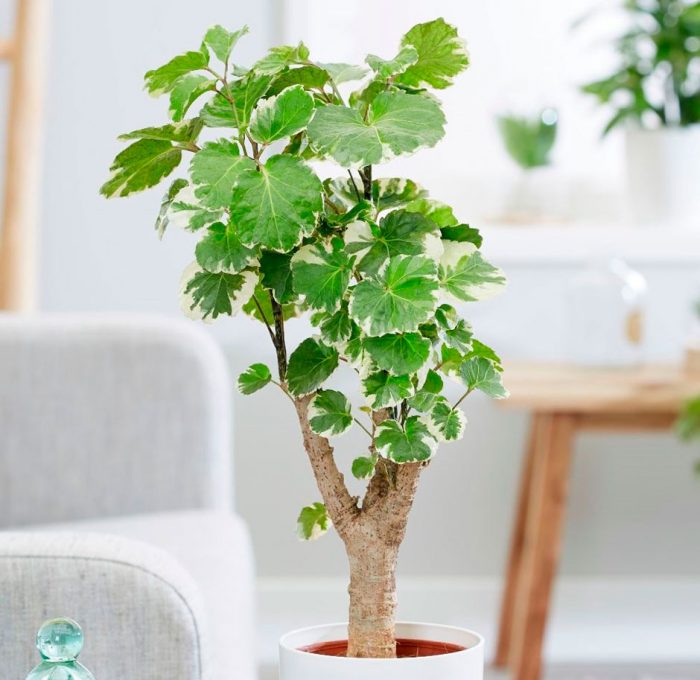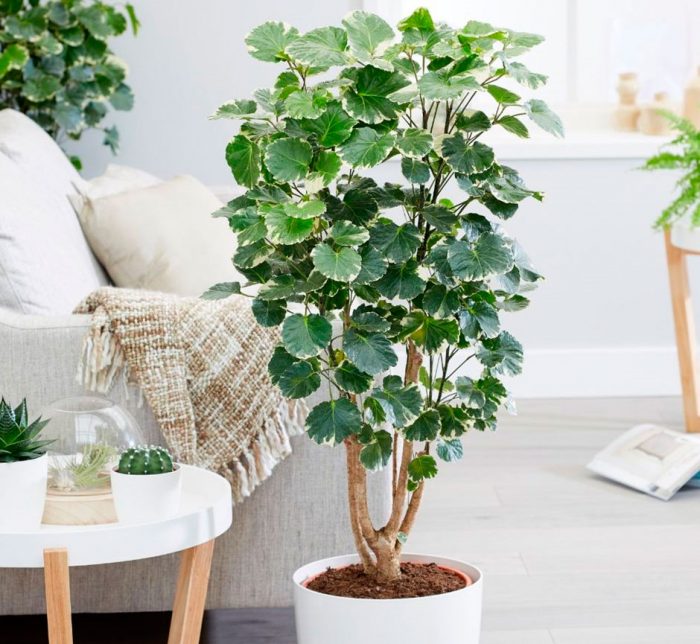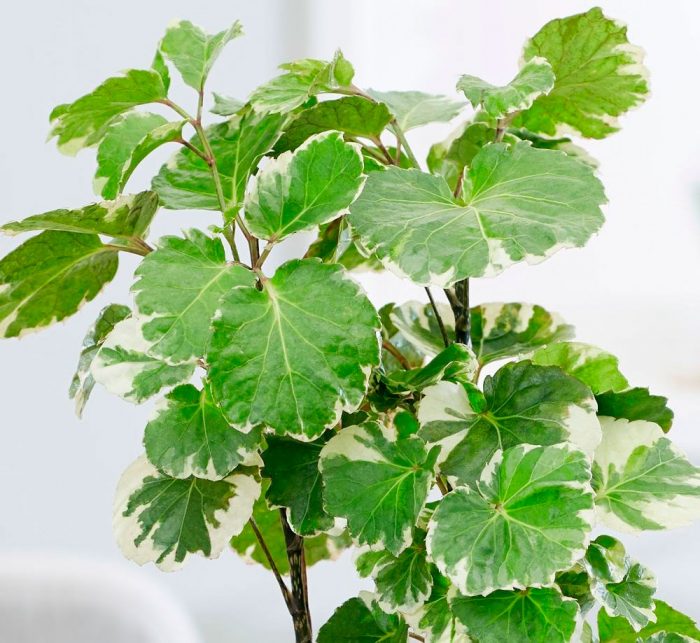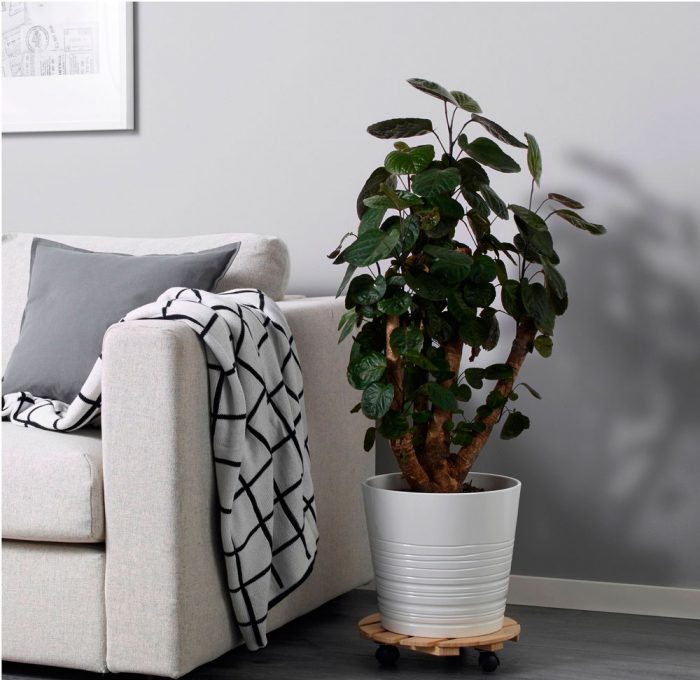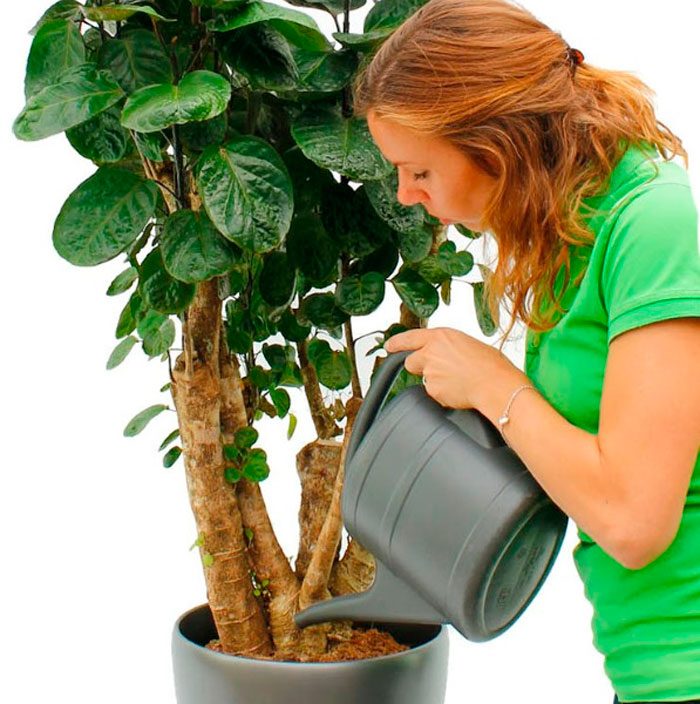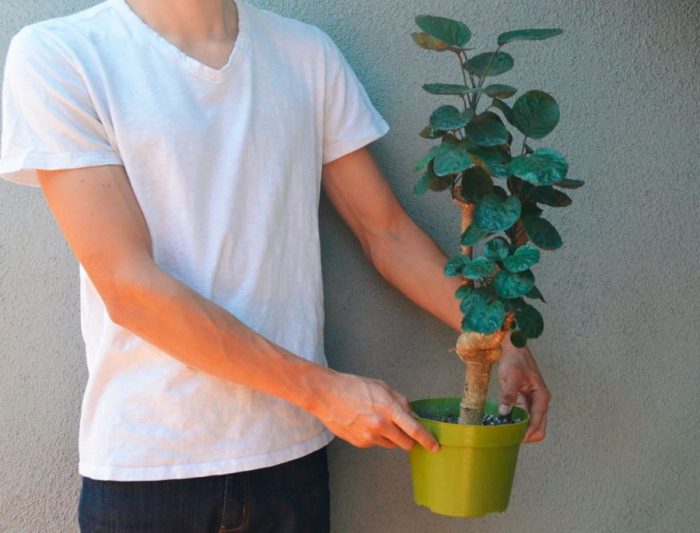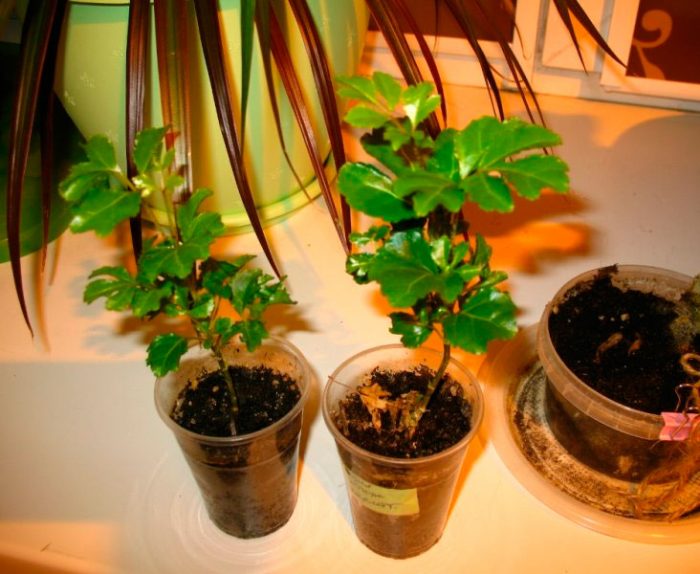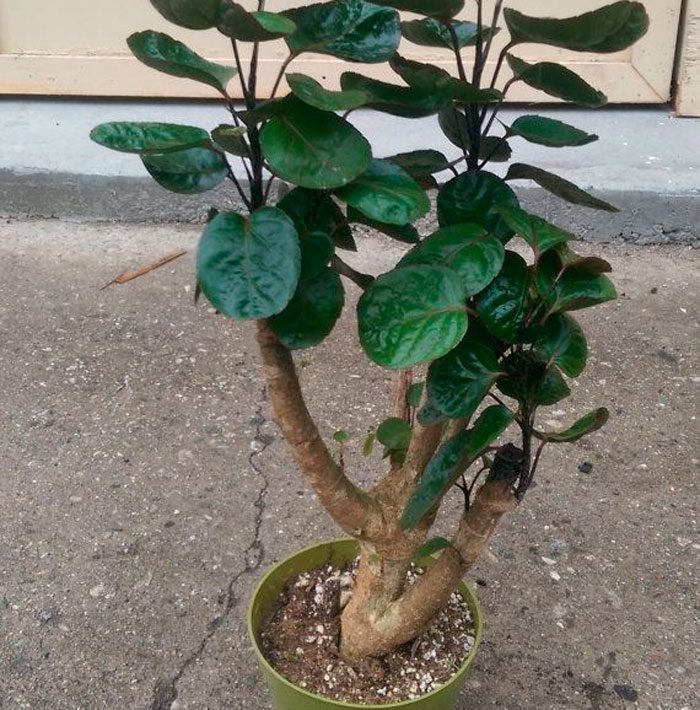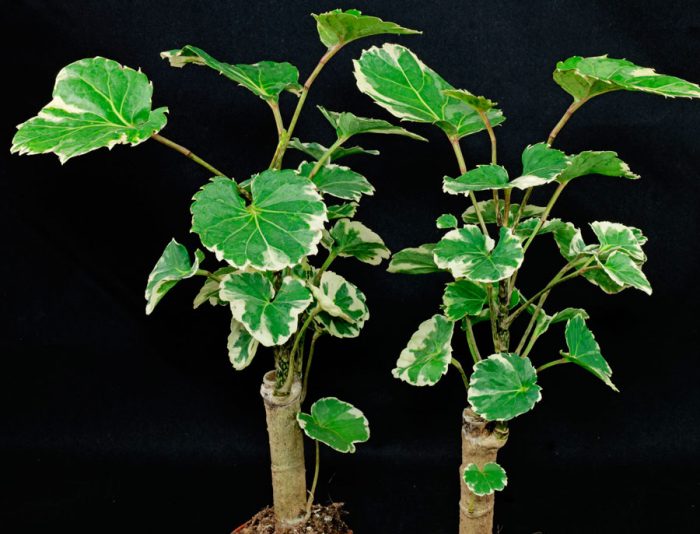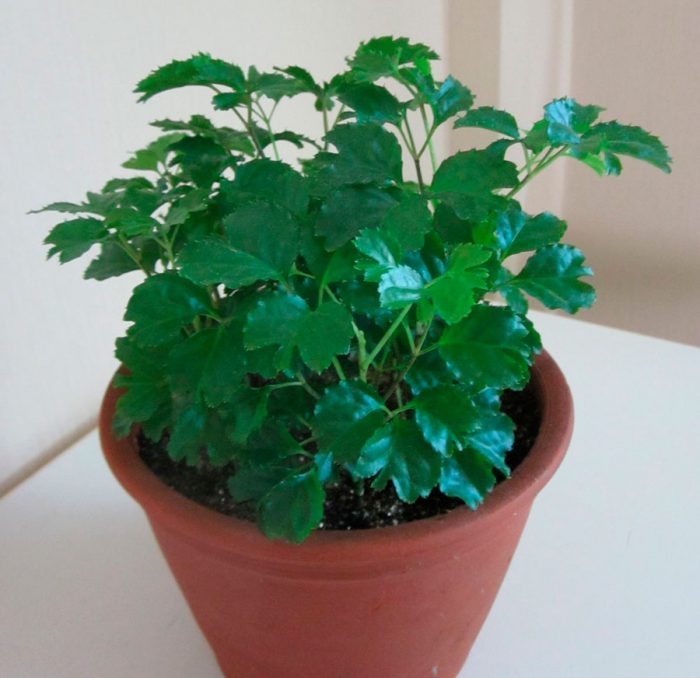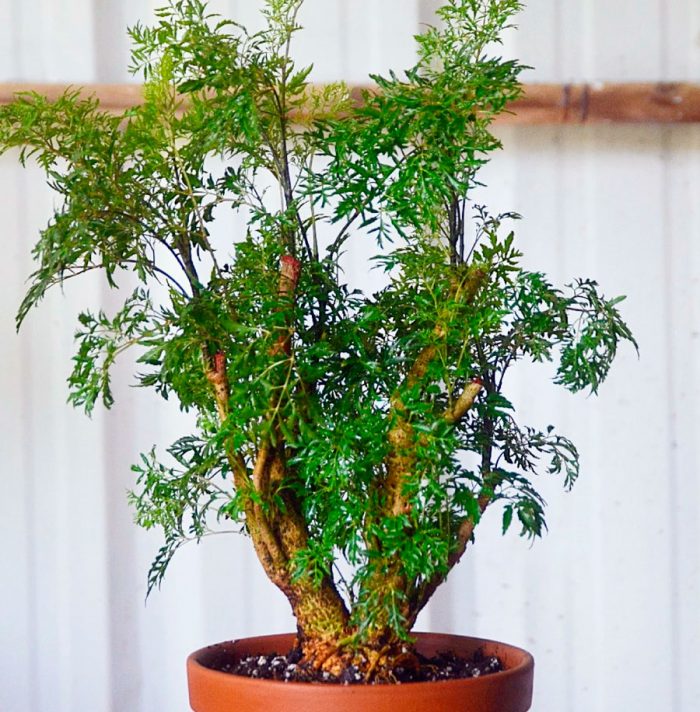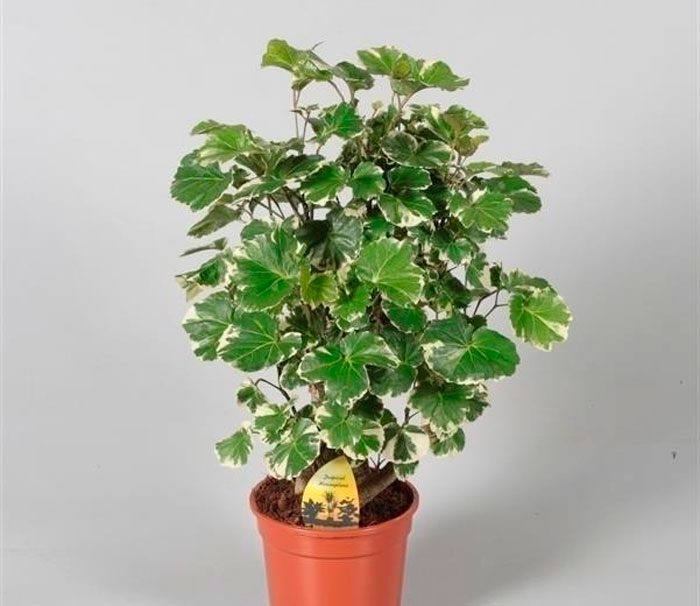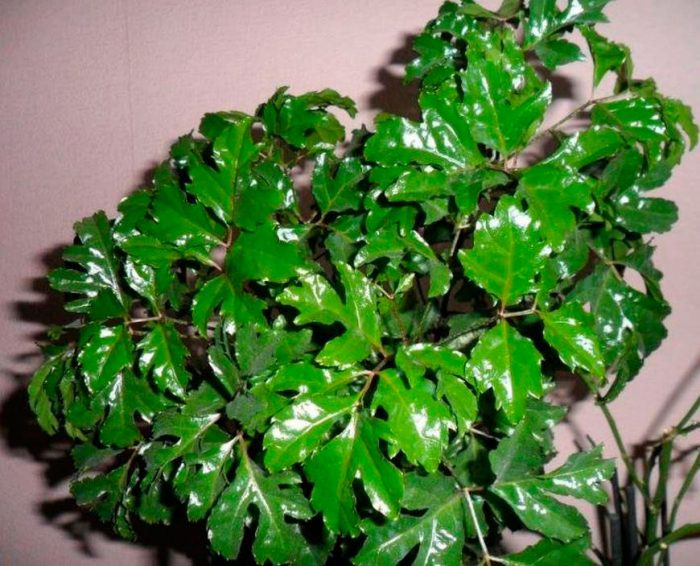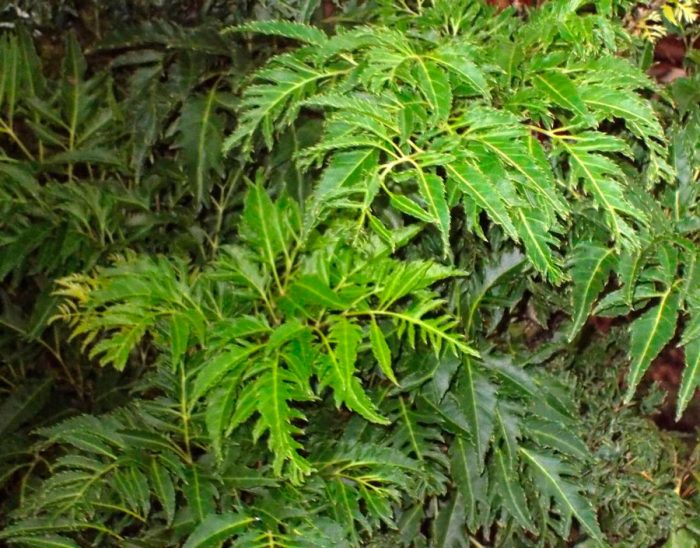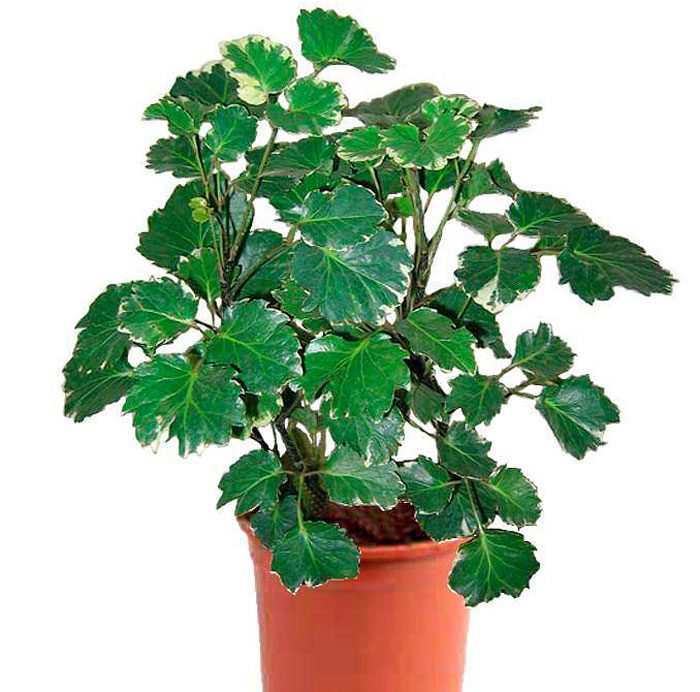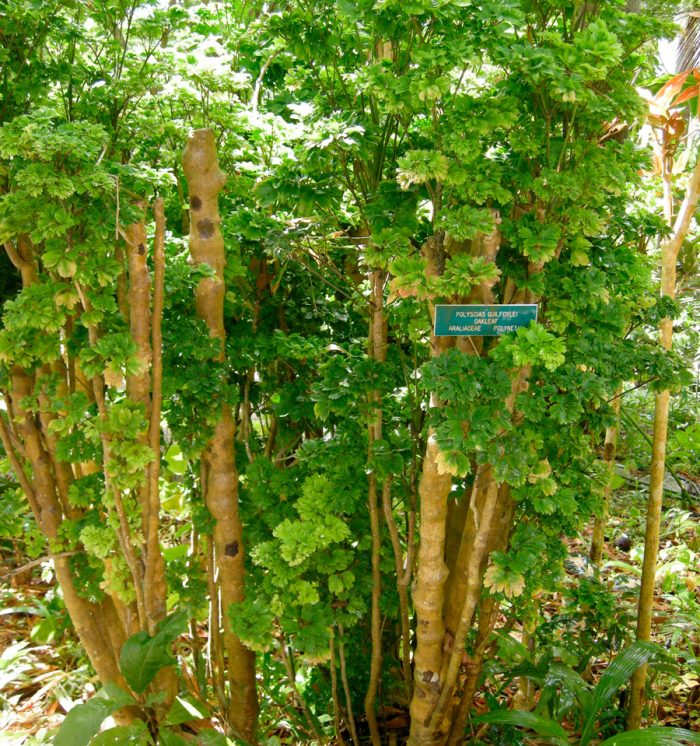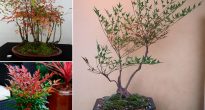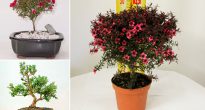The plant poliscias (Polyscias) is part of the Araliaceae family. In nature, it can be found in Southeast Asia, as well as on the islands of the Indian and Pacific Oceans. This genus unites more than 100 species, and most of them are cultivated at home. The closest relatives of this plant are ivy, fatsia and their hybrid varieties: trevesia, oreopanax and tetrapanax.
Content
- 1 Brief description of cultivation
- 2 Features of the policeman
- 3 Caring for the police at home
- 4 Reproduction methods
- 5 Pests and diseases of the police
- 6 Types and varieties of polisias with photos and names
- 6.1 Poliscias helmet (Polyscias scutellaria)
- 6.2 Curly poliscias (Polyscias crispatum)
- 6.3 Poliscias shrub (Polyscias fruticosa)
- 6.4 Polyscias balfouriana
- 6.5 Poliscias obtusa (Polyscias obtusa)
- 6.6 Poliscias fern (Polyscias filicifolia)
- 6.7 Poliscias paniculata (Polyscias paniculata)
- 6.8 Polyscias guilfoylei
Brief description of cultivation
- Bloom... Grown as an ornamental deciduous plant. Does not bloom in indoor conditions.
- Illumination... Green-leaved species grow in light shade, and variegated species grow in bright diffused light.
- Temperature regime... In winter - from 17 to 20 degrees, during the growing season - from 20 to 23 degrees.
- Watering... During the spring-summer period, the bush is watered often, but in moderation, immediately after the top layer of the potting soil dries. And in winter, watering is reduced and carried out only after two or three days have passed after the top layer of the soil mixture has dried.
- Air humidity... It should be tall. Therefore, it is recommended to place the pot with the plant on a tray filled with damp pebbles, or it is necessary to systematically moisten the plant from a spray bottle.
- Fertilizer... Feeding is carried out in April-October twice a month, for this they use mineral fertilizer for decorative deciduous plants. Moreover, in the period from October to April, the polisias is fertilized twice less often (1 time per month).
- Dormant period... Not pronounced, but in winter the flower grows more slowly.
- Transfer... In the last days of March or in the first days of April. While the bush is young, its transplant is carried out regularly once a year. An older plant is transplanted once every 2 or 3 years.
- Reproduction... Seeds, but much more often - apical or stem cuttings.
- Disease... Root rot.
- Pests... Aphids, root nematodes, scale insects and mealybugs.
Features of the policeman
The ramified root system of the poliscias grows both horizontally and vertically. Strongly branching stems are covered with brownish bark. Over time, they become lignified, but they still remain very flexible: the stems are extremely difficult to break, but they can be tied in a knot and then straightened. As it grows, the lower part of the bush is exposed. Alternately located short-petiolate leaf plates are painted in a rich or pale green color, they are round, lobed, triple pinnate or paired-pinnate, simply glossy or leathery. The polisias has variegated varieties that are very popular with flower growers. While the bush is young, its foliage, as a rule, has a simple shape, but over the years it is divided into segments. During flowering, inflorescences are formed on the bush, having a capitate or umbellate shape. But when cultivated in indoor conditions, such a plant blooms extremely rarely.
Caring for the police at home
Illumination
Polisias, growing both in nature and at home, needs bright diffused light. Moreover, he needs a large amount of light both in the warm season and in winter. Such a flower grows well in a little shade. When choosing a place, it should be borne in mind that green-leaved species grow normally in light partial shade, however, varieties with variegated foliage need a lot of light to maintain their bright color.
Temperature regime
Best of all, during the growing season, this flower grows at an air temperature of 20 to 23 degrees. In winter, it is recommended to rearrange the bush to a cooler place (from 17 to 20 degrees), which is located far from working heating appliances.
If the plant is on the windowsill, then foam plastic should be placed under the container, which will protect the roots from hypothermia. And to protect the bush from the streams of hot air that rises from the radiator, they use plastic or glass.
Remember that such a plant reacts extremely negatively to stale air, so the room where it is located must be ventilated regularly all year round. But at the same time, protect it from the draft.
Watering and humidity
Moisten the potting soil moderately, but often immediately after the top layer dries out. In the cold season, when the surface of the substrate in the container dries out, wait another two or three days and only then water.
The flower needs a high level of air humidity, so it must be systematically moistened with a sprayer. For watering and spraying, use well-settled water, the temperature of which should be slightly higher than room temperature. To soften hard water, it is mixed with several crystals of citric acid or drops of lemon juice. In order to increase the level of humidity in the air, open vessels filled with water are placed near the flower. Instead, you can take a pallet filled with wet expanded clay or pebbles and put a flower pot with a polisias on it, but make sure that the bottom does not come into contact with the liquid. If you have an aquarium in your room, then place a flower near it. Experts advise to systematically rinse the foliage under a warm shower.
Top dressing
Fertilizer in April-October is applied to the substrate 1 time in 15 days. To feed this flower, use mineral fertilizer for decorative deciduous indoor plants. At the same time, from October to April, they also regularly feed the policeman, but already once every 30 days. You can also use ready-made organic solutions for fertilizing; they can be purchased at a specialized store.
Police transplant
While the bush is young, it is transplanted systematically once a year, and more mature specimens - once every 2 or 3 years. An excellent time for transplanting is early spring, the beginning of the growing season. A soil mixture suitable for transplantation is made up of humus, coarse-grained river sand, peat, leafy and soddy soil.
At the bottom of the new pot, first, make a good drainage layer, for this they take fragments of clay shards or expanded clay. For transplanting, use the transshipment method, pre-moisten the bush abundantly, in this case it will be much easier to pull it out of the pot, while maintaining a whole lump of earth on the root system. Transplant the flower into a new container, and fill all the empty space with prepared soil mixture. Water the transplanted bush well and exclude any feeding for at least 30 days.
At a bush that has begun to grow intensively, the stems are pinched to stimulate branching. Polisias is great for hydroponic cultivation.
Reproduction methods
Cuttings
As a rule, apical or stem cuttings are used for reproduction of the indoor police. Many plants can be propagated by cuttings quite easily, but not poliscias. The fact is that if everything is done correctly, the roots on the cuttings can grow, but it will take a very long time. After the suitable cuttings are cut, the places of the cut are sprinkled with charcoal crushed to a powdery state. Let the cuttings dry at room temperature and only then plant the cuttings for rooting. To do this, they are planted in a mixture of coarse sand and peat (1: 1), on top they should be covered with a transparent cap (for example, a bag or a glass jar), in this case it will be much easier to maintain the high level of air humidity required for rooting.
The container with the cuttings is placed in a warm place (about 25 degrees), do not forget to regularly air in the morning and evening, if necessary, moisten the cuttings from a spray bottle and water them. They will take root for at least 30 days.
Pests and diseases of the police
Diseases
A home-grown poliscias only gets sick if it is not properly cared for. For example, if the humidity in the room is too low, then the edge of the sheet plates will turn brown and they will begin to fly around. Also, the fall of foliage in the bush can be associated with drafts or with an excessively high air temperature. In some cases, foliage may begin to fly around because the plant is aging and this is a completely natural process that should not cause concern.
Poliscias is highly resistant to infectious diseases, however, if water stagnates systematically in the substrate, then the roots can rot. How to proceed in this case? Remove the flower from the container and remove all the soil mixture from its root system. Cut out all decayed areas with a sharp, sterilized instrument, while grabbing a small part of healthy tissue. Sprinkle charcoal powder over the cuts and plant the bush in a new potting mix. At first, it is recommended to use a pinkish potassium permanganate solution or Fundazol solution for watering it. Do this until the bush is completely healthy.
Pests
Aphids, scale insects or mealybugs can settle on a recently transplanted or very weak bush. All these pests are sucking, they pierce young shoots and foliage, and suck the plant sap out of them. To combat harmful insects, a solution of any suitable insecticide is used, however, immediately before processing, remove the scale insects or worms from the bush using a cotton swab moistened with alcohol.After that, the bush is thoroughly washed under a warm shower, and only when it dries well is it sprayed with a solution of Aktellik, Fitoverm, Aktara, Decis or another insecticidal agent of a similar effect.
Rarely enough, root nematodes settle on such a plant, which makes its development and growth very slow. The bush begins to fade and dies after a while. It is impossible to get rid of such a pest, which is why cut cuttings from the bush for rooting, and destroy it along with the substrate.
Types and varieties of polisias with photos and names
Below will be described those types and varieties of polisias that are most popular with flower growers.
Poliscias helmet (Polyscias scutellaria)
This shrub-type evergreen has a curved main trunk (like a bonsai) and slender, erect lateral branches. This plant has many glossy, solid leaf plates, colored green and having a white border. Young leaves are rounded, but over time they become three times dissected. The most widespread variety in the culture is Marginata: the edge of green leaf plates is decorated with small denticles and a wider white border.
Curly poliscias (Polyscias crispatum)
This species forms not very tall bushes, its stems are completely covered with foliage. The rich green leaves have a white border. While the leaf plates are young, they have a rounded shape, but as they age, it is replaced by two or three times dissected, and yellow spots may appear on the surface. The best varieties:
- Palapala - green foliage is decorated with yellow spots;
- Raffles - such a flexible shrub with green foliage is used to create bonsai.
Poliscias shrub (Polyscias fruticosa)
This species differs from all the others, cultivated at home, in its high decorativeness, outwardly it looks like a fern. On the surface of young stems there are convex lentils. Vaginal double- or triple-pinnate leaf plates consist of serrate-serrated leaflets along the edge, the shape of which can vary from lanceolate to round. During flowering, apical inflorescences appear, consisting of unattractive small flowers. The best varieties:
- Multifida - leaf plates consist of a variety of linear or linear-lanceolate segments, which end with light-colored villi;
- Filigree - lace foliage is finely dissected;
- Snow Flake - along the edge of the coarse-toothed sheet plates, a white border passes.
Polyscias balfouriana
Or a balfuorian policeman. This evergreen plant does not branch very strongly, and it reaches a height of about 150 cm. Dark green long-petiolate leaf plates are lobular pinnately dissected, almost round, they reach about 70 mm in diameter. On the edge of the plate there is a border and white spots. Popular varieties:
- Fabian - the color of the foliage is dark purple;
- Pennockii - the foliage of this plant has a large size compared to the main species, it is greenish-gray and decorated with veins of a silvery color;
- Variegata - along the edge of the leaf plates, there is an uneven edging of a whitish color.
Poliscias obtusa (Polyscias obtusa)
The complex leaf plates include three-lobed rounded leaves, which are shaped like oak foliage. Because of this, this species is often referred to in foreign literature as "Oak Leaf" (oak leaf).
Poliscias fern (Polyscias filicifolia)
This shrub, which is evergreen, has long, pinnately dissected, green leaf plates that are similar to fern frond. The length of the foliage varies from 0.3 to 0.5 m, while its segments are densely located.
Poliscias paniculata (Polyscias paniculata)
Such a short shrub is decorated with lush pinnately dissected foliage of a greenish color, which reaches 15 to 20 centimeters in length. The widespread variety is Variegata: along the edge of the foliage there is a thin border of a golden hue.
Polyscias guilfoylei
This type is very popular with flower growers. This branched shrub has unpaired-pinnately-compound large leaf plates, which consist of green leaves of a lanceolate-oval shape along the edge toothed and bordered with a yellow or white stripe. The best varieties:
- Variegata - foliage is colored greenish-yellow;
- Victoria - small foliage of greenish-white color is strongly cut along the edge;
- Black - foliage wrinkled dark green color;
- Smus Black - smooth leaf plates have a very dark color.


Watch this video on YouTube

